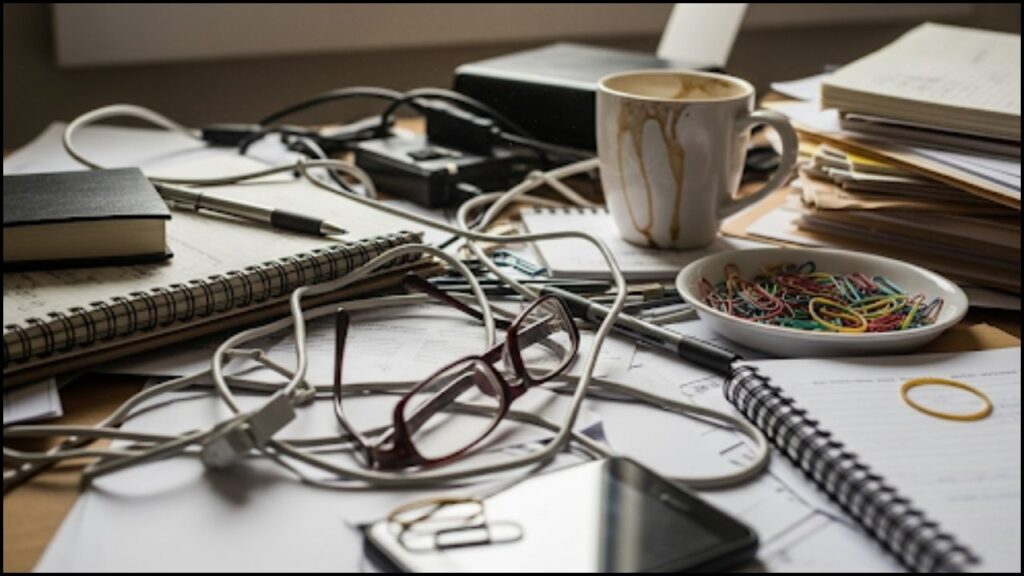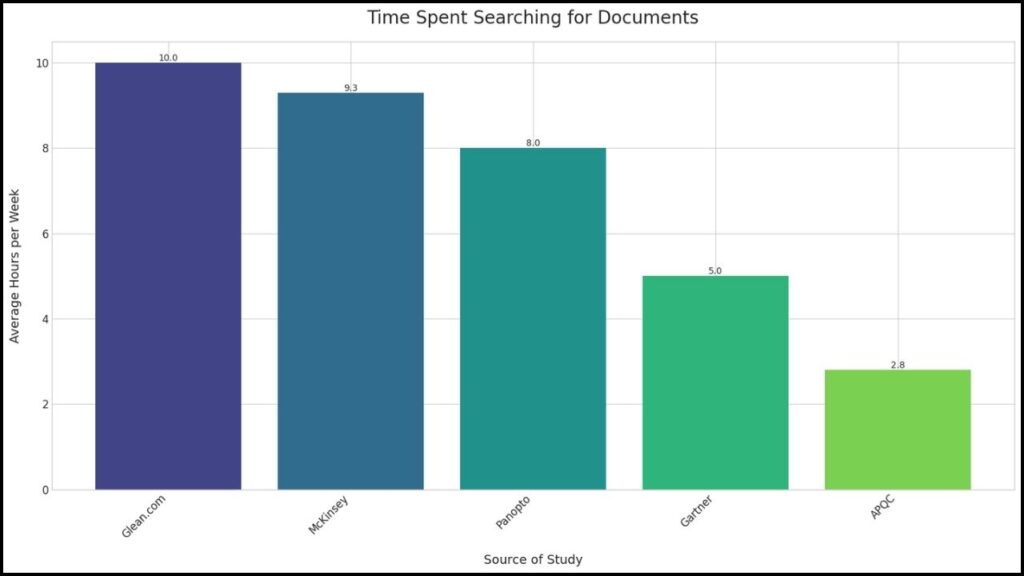A cluttered workspace can silently hinder productivity and increase cognitive load, a challenge many professionals face without conscious awareness. A desk overrun with desk clutter often goes unnoticed, becoming part of the daily landscape. This phenomenon, which experts term “habituation,” can negatively impact focus and efficiency. Identifying and systematically removing these items is a practical strategy for improving work performance and mental clarity.

The Psychology of Habituation and Your Workspace
The human brain is wired to filter out constant, non-threatening stimuli. This process, known as habituation, allows individuals to ignore the hum of a refrigerator or the familiar view from a window, saving cognitive resources for new information. While beneficial in many contexts, this same process can make a disorganized desk seem normal, even invisible. Dr. David Allen, a productivity consultant and author of Getting Things Done, has long advocated for a clear workspace as a foundation for a clear mind. “Your brain is not for holding things; it’s for having ideas,” Allen often states, emphasizing that external mess creates internal cognitive noise.
Research supports this claim. A 2011 study published in the Journal of Consumer Research found that participants in a disorganized room were more likely to make unhealthy food choices and less likely to donate to charity, suggesting that physical environments directly influence self-regulation. Conversely, a clean, organized space promotes better decision-making and a sense of control.
Five Unnoticed Clutter Traps and How to Remove Them
Several items on a typical desk transition from useful tools to permanent fixtures, becoming part of the unnoticed background clutter. These items often fall into one of five categories that contribute to what productivity experts refer to as mental friction.
1. The Graveyard of Unused Cords and Cables
Many desks are home to a tangle of defunct or mismatched charging cables, USB cords, and headphone wires. These relics from old devices serve no purpose but occupy valuable space and create visual noise. They represent a prime example of digital clutter that has physically manifested.
- How to fix it: Dedicate a specific, labeled container or drawer for active cables only. Remove and properly dispose of or recycle all old, broken, or unidentified cords. Tech experts at Wirecutter recommend using cable ties or wraps to manage and label the cords you keep, preventing future tangles.
2. The Paper Pile-Up
Even in a digital age, a relentless flow of physical documents from meeting notes to invoices and printouts can accumulate rapidly. These stacks often become a psychological burden, representing unfinished tasks or forgotten information.
- How to fix it: Implement a “one-touch” rule. When a piece of paper enters your workspace, handle it immediately: file it, scan it, or shred it. For documents you need to keep, consider a simple filing system with clear labels. As reported by the Association of Records Managers and Administrators (ARMA), a well-defined records management system can save up to 20% of a knowledge worker’s time.

3. Obsolete Notebooks and Pens
The collection of half-filled notebooks, loose sticky notes, and pens that no longer write is another common source of desk clutter. These items offer a false sense of security, suggesting that an idea or note can be referenced later, when in reality they are rarely revisited.
- How to fix it: Consolidate notes into a single digital or physical notebook. Transfer any critical information from old notebooks to a new system, then discard the old ones. Test all pens and discard those that don’t work. The principle of minimalism applied to office supplies can reduce visual distraction and encourage a more focused approach to note-taking.
4. The Forgotten “Reference” Books and Manuals
Books, software manuals, and old binders often live on a desk or nearby shelf, a testament to past projects. They are frequently left there “just in case” they are needed again, though they rarely are.
- How to fix it: Evaluate each item. If the information is available online or if the project is complete, move the item to a bookshelf or a long-term storage area. As organizational guru Marie Kondo suggests, only keep items that “spark joy” or are essential for your current, active work. For a professional setting, this translates to keeping only what is regularly and functionally required.
5. Unused Personal Trinkets and Mementos
While personal items can make a workspace feel more inviting, an excessive number of mementos, stress balls, or decorative objects can contribute to clutter. These items can become a significant source of visual distraction, pulling focus away from the task at hand.
- How to fix it: Curate your personal items. Choose one or two meaningful objects to display. By intentionally selecting a few items, you can still personalize your space without creating unnecessary visual noise. This practice aligns with the principles of visual organization, where the absence of clutter improves the ability to process and act on information.
Expert Analysis and Forward-Looking Trends
The move toward remote and hybrid work has made the state of the home office a more pressing concern. A 2023 study by the International Data Corporation (IDC) noted that “employee well-being and productivity are increasingly linked to the quality of their remote work environment.” A clean, organized space is no longer just a preference but a key component of professional performance.
According to Dr. Carla Martinez, a cognitive psychologist at the University of California, Berkeley, “The act of tidying up is not just about aesthetics; it’s a form of active mindfulness. By taking control of our physical space, we signal to our brain that we are ready to take control of our work.”
The principles of tidying a workspace are universal, whether in a corporate cubicle or a home office. It is an ongoing process, not a one-time event. Experts recommend setting aside 10-15 minutes at the end of each workday to reset the space, ensuring that the most critical items are in view and unnecessary clutter is removed. This simple habit can prevent a minor mess from becoming an invisible, productivity-draining burden.
The Psychology of a Clean Desk: Boosting Productivity and Reducing Stress
